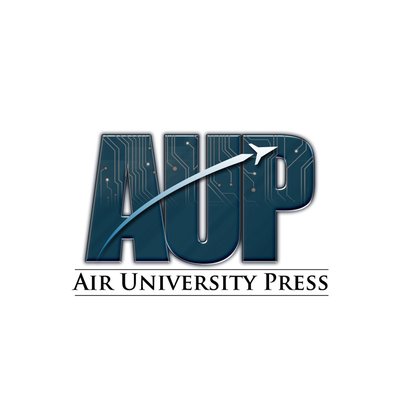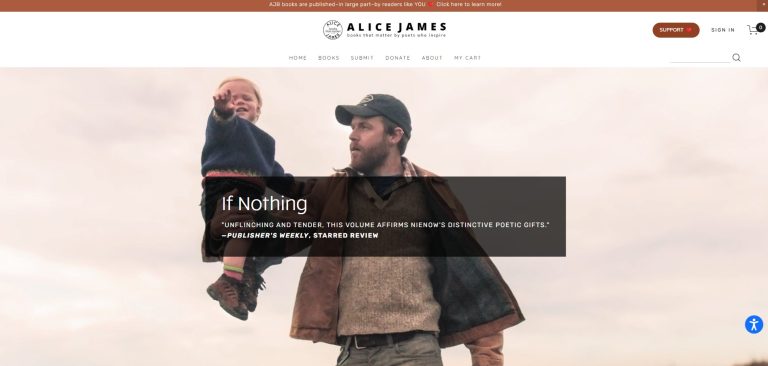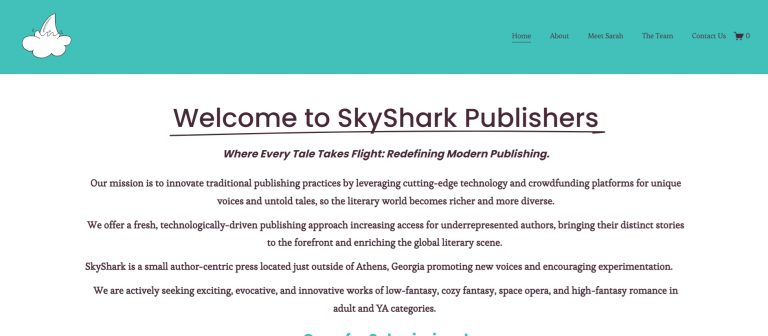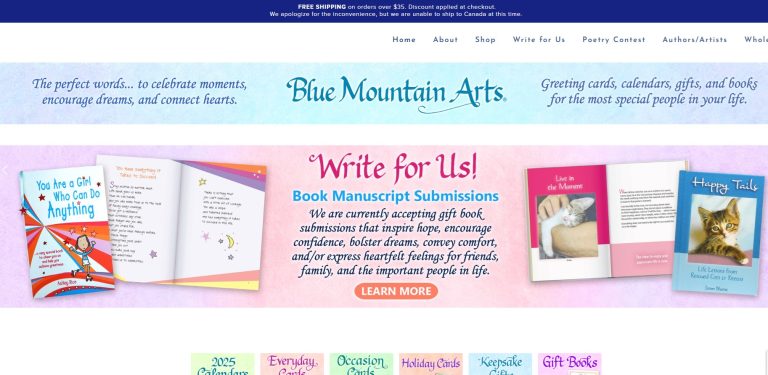Air University Press
Website
http://www.au.af.mil/au/aupress/
From the Publisher
Air University Press (AU Press), part of the Air Force Research Institute (AFRI), is the publishing agent for Air University (AU). Since 1953, it has edited, published, and distributed over 1.1 million student papers, curriculum texts, faculty research pieces, journals, and scholarly books to further military thought critical to the intellectual growth of the US military and the decision making of American political leaders. AU Press is the preeminent press for Air Force-related publishing.
Air University General Order No. 54, 28 September 1953, brought AU Press into being to support the mission of AU. The press was chartered to publish significant contributions of research and scholarship in the Air University, the USAF, and other sources . . . [and] to enhance the academic prestige and support the accreditation of the Air University.
Our products include the Air & Space Power Journal, the flagship professional publication of the US Air Force. The English edition is published electronically every other month, and the Spanish (since 1947), Chinese (since 2007), and Africa-Francophonie (in French and English, since 2005) editions are published quarterly in print and electronic versions. We also produce the Strategic Studies Quarterly, a forum for strategic-level discussions by military, government, and academic professionals about national and international security policies and evolving defense strategies.
In 1997 the press placed its first publications online. On 3 January 2003 the press launched a redesigned website in celebration of its 50th year. In its first half century, the press distributed approximately 500,000 publications. Just in the last 10 years, the press distributed over 600,000 books by capitalizing on new technologies to help war fighters understand air and space power. As the new millennium progresses, our project editors, copy editors, illustrators, marketing specialists, and typesetters will continue striving to meet the research, curriculum, and scholarly needs of Air University’s schools and faculty members. Our future goals include further developing the electronic publishing process, streamlining the publication and distribution of books, journals, and research papers.
Submissions
All manuscripts must comply with the Air University Style and Author Guide, which is based on the Chicago Manual of Style, 16th edition. If you are interested in publishing a manuscript through AU Press, please read this section carefully. We cannot accept manuscripts that are not submitted according to the procedures described here.
Submitting a Manuscript to the Publication Review Board
To have a manuscript considered by the AU Publication Review Board, please send an electronic copy of the manuscript, preferably on a CD, along with a cover letter that identifies your probable audience, describes your project’s value to the Air Force, and tells us about your background and expertise, to the Director, Air University Press, Muir S. Fairchild Research Information Center, 600 Chennault Circle, Building 1405, Maxwell AFB, Alabama 36112-6010.
Submitting an Accepted Manuscript for Publication
If we accept your manuscript for publication, we will ask you to assemble all of your manuscript materials for final submission. All files should be submitted electronically on two CDs—one for text files and one for images. (Original images may be submitted by mail.) Please submit the following items, which are discussed in detail below.
• A complete manuscript, properly formatted according to the requirements of the Air University Style Guide for Writers and Editors (AU-1)
• Original images or an individual file for each electronic image.
• An AU Press illustrations log in appendix C of AU-1
• A photo of you for the “About the Author” page and, if desired, the back cover
• Written permission to reproduce any copyrighted material
• A distribution list for mailing copies of your publication
• For books, a seed list for an index
• Your year of birth (used by the Library of Congress to prepare cataloging in publication data)
Formatting Your Manuscript
• Submit electronic files of the complete manuscript on two CDs—one for textfiles (in a format compatible with Microsoft Word) and one for images.
• Label the CDs with your name, the title of your work, and the contents of the disk.
• Do not use templates, embedded styles for the table of contents or index, or similar desktop-publishing features.
• Create a separate file for the front matter (e.g., contents, foreword, preface, etc.), each chapter, and each part of the back matter (e.g., appendixes, glossary / list of abbreviations, bibliography, etc.).
• Do not embed illustrations in the text files. Instead, submit them as separate electronic files (see “Formatting and Submitting Tables and Illustrations,” below), and put a caption indicating where they should be placed in the text. However, you may embed tables in the text files.
• Use a 12-point font and double spacing. Front matter, notes, and back matter should be double spaced as well.
• Place notes at the end of each chapter (endnotes), not at the bottom of each page (footnotes). They should be double spaced and in 12-point font. Use your word processor’s “insert endnote” feature to “embed” the notes to enable automatic renumbering when you add, delete, or move notes. We will not accept manuscripts whose endnotes are not embedded.
• Make sure that your hierarchy of subheadings is consistent (see part 1, Air University Style Guide for Writers and Editors, 1.60).Do not use numbered subheadings.
• Check all quotations against the original sources and supply complete documentation for endnotes and bibliography.
• All notes and bibliography entries must be formatted according to this style guide (see part 1 of AU-1, appendixes A and B).
• Provide translations or paraphrases of foreign-language passages in parentheses following the passage. For foreign-language titles in the endnotes or bibliography, put the translations in brackets.
Formatting and Submitting Tables and Illustrations
• Failure to follow these instructions may cause significant delays in the production process. If you have any questions or need assistance, please call Air University Press’s illustrators at commercial 334-953-3041 / DSN 493-3041 or commercial 334-953-3042 / DSN 493-3042.
• When you submit your illustrations (graphs, charts, photos, maps, artwork, etc.), you must submit an AU Press illustrations log in appendix C of AU1 with all relevant information about each illustration. You can download the log from the instructions for authors on the AU Press website. You can put the illustrations log on the same CD as your graphics files.
• Submit high-resolution digital images or original images such as photos, maps, or figures (line art). We will return original images to you. Note that GIF and BMT files are not normally acceptable for printing because of their low resolution.
• If you scan your own images, please keep the following principles in mind. To ensure that the file contains enough data to reproduce accurately,use high-end black-and-white or color calibrated scanning equipment. Scan all images (color and grayscale) at a resolution between 266 and 300 pixels per inch, based on an input-to-output (I/O) size ratio of 1 to 1. All enlargements or reductions applied to images should adjust the pixels proportionately. For example, a 3-by-5-inch original photograph to be printed at 3-by-5 inches (I/O ratio of one to one) should be scanned at 266 to 300 pixels per inch. The same size photo to be printed at 6-by-10 inches (I/O ratio of one to two) should be scanned at 532 to 600 pixels per inch. Save your images either as uncompressed TIFF (tagged image file format), native Photoshop file format (.psd), or EPS (encapsulated postscript) files. JPEG files may be submitted, provided they are saved at the highest-quality setting.
• Images scanned at lower resolutions and then forced or pushed to a higher resolution to meet printing standards become blurry. This happens, for example, if you change an image at 150 pixels per inch to 300 pixels per inch in your image-editing program. Instead, you should rescan the image at the target resolution of 300 pixels per inch. Although you can reduce digital images to a desired resolution, you should never try to increase them to a higher resolution to meet printing standards.
• Do not import images into another document such as Microsoft Word for submission. Submit images as individual files only.
• Scan all line art as bit map images with a resolution of between 1,200 and 2,540 pixels per inch, based on an I/O ratio of 1 to 1. Enlargements and reductions are similarly proportional. Save the images either as uncompressed TIFF, native Photoshop file format, or EPS files.
• Please send us a current photo of you for the “About the Author” section and the back cover of your book. More than one pose is permissible. The photo for “About the Author” should be black and white; the one for the back cover should be color. We will return all original photographs to you after we have processed them.
• Tables should be numbered consecutively throughout the manuscript (e.g., Table 1, Table 2, etc.) and embedded in the text file below their captions. If a credit line is needed, place it below the table.
Table 2. Bomb strikes during the Battle of the Bismarck Sea [place the caption above the table] Reprinted from Air Evaluation Board, Southwest Pacific Area, “Battle of the Bismarck Sea and Development of Masthead Attacks,” 1 July 1945, 47, Air Force Historical Research Agency, Maxwell AFB, AL. [place credit line below the table]
See 1.62 of part 1 of AU-1, for information about formatting tables.
• All illustrations—figures, charts, photos, maps, and the like—should be submitted as separate files (one illustration per file), not embedded in the manuscript. Number the illustrations consecutively throughout the manuscript and include the illustration number in the title of the file (e.g., Figure1.psd).Indicate the placement of each illustration by including its number and caption in the text (e.g., following the paragraph in which you refer to the illustration). For example,
Figure 9. Cutaway view of the B-25G. (Reprinted from North American Aviation, “Train Dispatcher,” Saturday Evening Post, 4 November 1944, 107.)
• If you have a list of illustrations and list of tables, include each list (titled “Illustrations” and “Tables” [without the quotation marks])on a separate page, following the table of contents. Cite these items in the table of contents as “List of Illustrations” and “List of Tables” (without the quotation marks).
• Our artists design and create attractive covers for our publications. Although we reserve the right to make final artistic decisions about the cover of your book, if you have ideas about artwork, our illustrators will be happy to work with you to bring them to fruition. Please send us your notes and/or sketches and contact our illustrators at commercial 334-953-3041 / DSN 493-3041 or commercial 334-953-3042 / DSN 493-3042.
Seed List for Index
• Most AU Press books (but not research papers) have an index.
• Because the author knows best what terms a reader would find useful in an index, the author is responsible for providing a “seed list”: an alphabetized list of key terms that an AUPress editor uses to prepare an index. See 1.37 in AU-1 for more guidance on indexing.
Permissions
• When you sign your publishing agreement with us, you guarantee that your work is original. Therefore, if you use copyrighted text, graphics, or pictures, you must obtain written permissions from the rights holders and submit copies to us, along with instructions from the rights holders concerning credit lines and publication limitations. You are also responsible for the payment of any necessary fees to the rights holders. After we begin editing your manuscript, if we think you need to obtain additional permissions, we will contact you as soon as possible.
• You do not need to obtain permission if the material you use is in the public domain or if you comply with the doctrine of fair use of copyrighted material. For further information on such material, see part 1 of AU-1, appendix C.
• Copyright law does not set precise boundaries for fair use. Ultimately the author is responsible for not violating copyright law. However, AU Press has adapted the fair use guidelines that the University of Chicago Press offers for use of its own publications, available on the University of Chicago Press’s Website.
• Quotations for the traditional scholarly purposes of criticism, argument, and illustration are fair use.
• However, reproducing more than 5,000 words from a source, more than 5 percent of a source, or a complete poem, song, or other literary work is probably not fair use.
o Reproduction of complete graphical units (charts, images, photos, maps, etc.) requires permission. AU Press will not publish a copyrighted graphic unless the author obtains written permission to reproduce it and supplies a copy of the permission to AU Press.
o If you believe a graphic falls under the doctrine of fair use (e.g., a photograph used to facilitate commentary on techniques of photographic composition or a single graph, table, or chart that includes no pictorial elements and merely presents data), you may ask AU Press to consider an exception to the above policy.
• In the case of material developed for school course work, the office of primary responsibility in the using organization is responsible for reviewing permissions and ensuring that the use of the copyrighted material adheres to any limitations or requests indicated by the rights holder (see Air Force Instruction [AFI] 33-360, Publications and Forms Management; and AFI 51-303, Intellectual Property—Patents, Patent-Related Matters, Trademarks and Copyrights.
• Because obtaining permissions can take a long time, begin requesting them early in the process of preparing your manuscript.
Distribution List
• We normally will provide you up to 25 copies of your book free of charge. We will send them all to you, or you may submit a list of names and addresses of people or organizations to whom we will send them. However, these provisions are subject to budgetary constraints.
Checklist
• Use the author checklist in appendix B of AU-1 to compile your submission. Please send all materials to the
Director
Air University Press
Air Force Research Institute
600 Chennault Circle
Maxwell AFB, AL 36112
Information
Editors Name Dr. Ernest Rockwell
Year Founded 1953
Does the Press Accept: Online Submissions, Unsolicited Submissions
What forms of writing are you looking for? Non-Fiction
Ebook or Print? Both
Do your charge for any services? No
Submission Guideline URL http://www.au.af.mil/au/aupress/authors3.asp
Contact
Email afri.aupress{@}us.af.mil
Address Muir S. Fairchild Research Information Center
600 Chennault Circle, Building 1405
Maxwell AFB, Alabama 36112
United States of America
Facebook https://www.facebook.com/AirUnivPress
Twitter https://twitter.com/aupress
GooglePlus
Category Academic Book Publisher, Book Publishing Company, Cultural Book Publishing Company, Historical Book Publishing Company, Political Book Publisher, Textbook Publisher, University Book Publisher

For over 26 years, EveryWriter has been a cornerstone of the literary community, dedicated to connecting writers with publishing opportunities. We’ve meticulously curated comprehensive listings of literary magazines and book publishers, helping thousands of writers achieve their publishing goals. EveryWriter has had the privilege of interviewing and publishing Pulitzer Prize-winning authors, and pioneered industry-standard metrics like our renowned “Top 50 Literary Magazines” list, setting a new benchmark for quality resources on the web.




